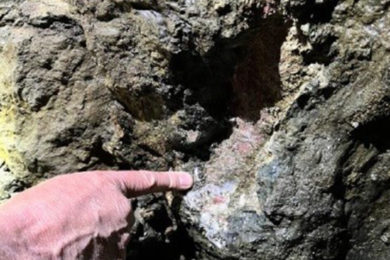According to PricewaterhouseCoopers (PwC), 2009 mining M&A saw significant decreases in values and also changes in the characteristics of buyers and sellers. Sellers were acting largely through necessity to strengthen balance sheets for survival rather than seeking expansion and development capital according to Mining Deals, PwC’s annual publication on deal activity in the mining sector.
Mining deals certainly felt the impact of the global economic downturn with significantly lower deal values driven by lower asset prices and an absence of ‘mega deals’. This resulted in the total value of mining M&A activity halving from 2008 levels. While the number of deals increased by 16%, the average deal value plummeted from $124 million in 2008 to $52 million in 2009 as smaller deals were done to deleverage balance sheets. The biggest mining deal was Yanzhou Coal Mining’s acquisition of Australian coal miner Felix Resources with a value of $2.8 billion.
The number of small deals (below $250 million) was significantly above the prior three years, with a total of 1,859 deals. This trend was driven by consolidation of smaller players and deals driven out of necessity for survival rather than opportunistic or strategic growth ambitions.
The level of mid sized deals (between $250 million and $1 billion) remained consistent with 2008 with 66 deals. Deal prices fell during 2009 as deals recognised in this bracket saw a combination of larger transactions falling below the $1 billion mark off the back of lower commodity prices and some of the lower end deals falling below $250 million. The most significant change however occurred in the higher value deals space, with a dramatic drop in deal sizes greater than $1billion, to the lowest level in four years. Not only did the number of large deals fall, but the size of these large deals fell significantly with no single deal (as defined in this document) exceeding a value of $3 billion.
Deal activity centred in North America, Asia-Pacific and Australasia, was largely driven by activity in Canada, China and Australia. The Asia-Pacific region proved more resilient to the downturn than most, with the total value of all deals dropping 16% from 2008 levels, compared with a global reduction of around 50%. The relative strength of Asia-Pacific deal making was driven by activity in the coal sector, with six of the top ten Asian deals involving coal assets.
Tim Goldsmith, PricewaterhouseCoopers’ Global Mining Leader, comments: “A key theme stemming from 2009 is the emergence of Chinese acquisition activity, which accounted for three of the top ten cross-border deals by value in 2009 (27.5% of all cross border deals), compared with only one in 2008. The trend was driven by Chinese firms taking stakes in Australian resource companies to assist in securing the long-term supply of core commodities and attempting to shift pricing power away from suppliers. In many ways 2009 was the year of the survivor and the opportunist.
“In prior years, miners were focused on acquiring assets for growth. This market dynamic changed with the onset of the global economic downturn. For many large and junior explorers, M&A became a necessity to repay debts or fund capital projects. These obligations, combined with a lack of alternate funding options opened the door for cash-rich companies to acquire assets cheaply.
“The appetite for mining M&A was slight during the beginning of 2009, but picked up gradually as liquidity and confidence returned to capital markets. The fourth quarter recorded the greatest deal value and highest deal volume for that year.
“Despite these seeming bargains, the question remains: if assets are relatively cheap, compared to the peak prices of 2007, do they represent good value? A deal’s success ultimately hinges on timing, and the benefits may not be realised for some time.
“While the outlook is uncertain, the return of the world’s major mineral consumers – China, Japan, South Korea and India – to the M&A market, suggests the worst may be behind us.”
Mining Deals 2009 is based on published transactions from the Dealogic ‘M&A Global’ database, December 2009. Analysis encompasses announced deals, including those pending financial and legal closure and those which are completed. Deal values are the consideration value announced or reported including any assumption of debt and liabilities. Figures relate to actual stake purchased and are not multiplied up to 100%. The geographical split of the deals refers to the location of the purchased asset(s). Where this is not clearly identified or relates to multiple geographical regions, the deal region is stated based on the location of the majority of the assets sold. The analysis relates to the extractive mining sector and therefore excludes related sectors such as the steel industry and metals trading sectors. The sector and subsectors analysed include: precious metals (e.g. gold, silver, platinum), base metals (e.g. iron ore, nickel, copper, aluminium), diversified (companies with a wide range of mining activities across subsectors), coal and other (includes uranium, mineral sands, mining services). Throughout the report, both for 2009 and previous years, we classify the Russian Federation, Kazakhstan, Kyrgyzstan, Uzbekistan, Turkmenistan, Tajikistan and Armenia as ‘Russia and the Commonwealth of Independent States (CIS)’. A full list of transactions throughout 2009 is available by visiting the Mining Deals website at www.pwc.com/miningdeals.








